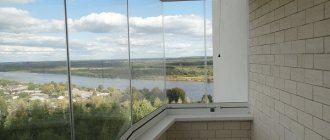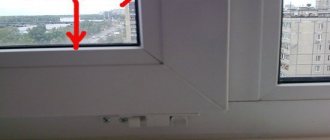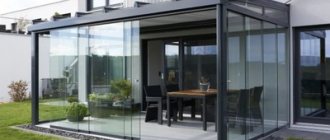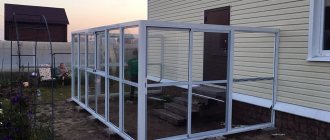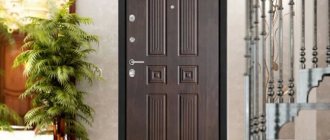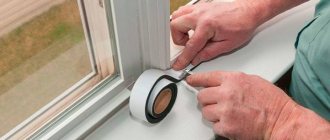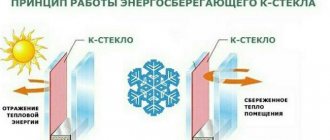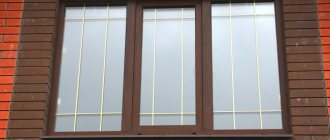Developers and manufacturers of double-glazed windows strive to make their products more perfect and actively use modern technological advances. Through window openings, about a third of all heat generated by appliances and heating systems escapes from the room to the street.
Energy-saving windows are a new generation of glazing. The products are designed to reduce heat loss through window openings and create more comfortable living conditions.
How does energy-saving double glazing work?
The energy-saving properties of double-glazed windows are determined mainly by the unique qualities of the glass used (k, i, iM) . These materials have the property of reflecting heat in the direction of radiation. Radiators, heating appliances, household appliances and even the human body are sources of heat in the form of long infrared waves. Low-emissivity glass as part of a double-glazed window returns heat flow from household appliances into the room, and from the sun, heated asphalt and buildings to the street.
At the same time, short electromagnetic waves of sunlight enter the room unhindered. A room with such windows is warmer in winter and cooler in summer, and the level of illumination is almost the same as when using conventional windows.
The types of glass used for the manufacture of energy-saving double-glazed windows differ in the type of low-emission coating, the technology of its application, and, as a result, technical and operational characteristics.
Selection of products for the home
Its weight and appearance depend on the size and thickness of the glass unit; Energy-saving glass in a double-glazed window will not add weight to the structure, but it will help save money on heating significantly. Externally, the design is similar to a regular double-glazed window. The difference is that the energy-saving package consists of two glasses, one of which is coated with a special composition, while the regular analogue has three glasses and two air chambers, which makes it heavier.
The energy-saving design is effective not only in winter, when it is necessary to retain heat indoors, but also in summer, when it is necessary to isolate the sun's rays coming from the street. The room will have a comfortable temperature all year round.
K-glass
To obtain low-emissivity k-glass , a layer of indium and tin oxides is applied to the surface of ordinary float glass at the manufacturing stage. As a result of chemical interaction, a thin and stable metal oxide film is obtained. The coating has sufficient strength and is difficult to scratch or damage in any other mechanical way. To improve characteristics, the material is hardened and laminated. There are no special requirements for the storage and transportation of glass with a “hard” k-coating.
This type of material is one of the first developments in this direction. The products are significantly inferior in their characteristics to the next generation products. According to manufacturers, the use of k-glass as part of a double-glazed window reduces heat loss from the room by only 30% during the cold season.
Window energy efficiency class
Everyone is accustomed to seeing stickers on household appliances with a scale of their energy efficiency indicators. The same information also applies to double-glazed windows. They mean how much products of this marking allow you to save on heating and cooling (air conditioning) of the room.
Many countries have adopted standards that summarize two types of energy savings. Requirement indicators in regions with cold climates and in hot countries are different. An energy efficiency class scale has been created.
In Russia the following classification is used:
- E – low class;
- D – reduced;
- C – normal;
- B – high;
- A is the highest.
There are many different climatic regions in Russia and in each of them the requirements for double-glazed windows differ. For example, from the Moscow region, where heat and cold are average, they include the highest energy efficiency class for both the hot season and the winter.
I-glass
A two-layer coating of silver and titanium oxide is applied to one surface of the glass using cathode sputtering.
I-glass is more efficient - it reflects about 90% of the infrared energy emitted by household appliances back into the room. The main disadvantage is low resistance to mechanical and chemical influences. The coating is easily scratched and oxidized upon contact with air. Therefore, as part of a double-glazed window, the coated side must face the inside of the structure to prevent damage, and the blanks must be stored in airtight packaging.
If a double-glazed window was manufactured in violation of the technology or lost its tightness as a result of damage, the i-layer quickly collapses and the product completely loses its properties. Often, unscrupulous manufacturers use i-glass in their products, which was stored incorrectly, as a result of which the coating began to deteriorate. Signs of a defective product are rainbow stains on the glass.
IM glass
The use of multifunctional (iM) glass in window construction is the most modern innovative solution. This is a more “perfect” relative of i-glass. Multilayer coating is applied to the base:
- A middle functional layer of silver or chromium that reflects infrared light waves;
- Protective layers – to prevent damage to the main “soft” layer;
- The lower and upper layers are made of oxides and nitrites. Specularity, light transmission properties and color of the product are determined.
The technology has made it possible to embody in one material the advantages of all existing types of glass: energy-saving, tinted, shockproof, self-cleaning. Such double-glazed windows do not create a barrier like curtains, but absorb radiation, as photo filters do. In the summer, the room will remain cool, as if using tinted glass, but the light transmittance of the window will not decrease. In winter, even in the window area it will be warm and comfortable.
Multifunctional glass can be given a convex shape and tempered to improve its strength characteristics, which provides ample opportunities for the design of non-standard buildings and private houses.
Modern wooden windows
This whole story is almost a thing of the past.
Nowadays wood is also used to produce modern windows, only the technology has changed.
For the manufacture of frames and sashes, pine, larch, and oak are most often used.
Now they are made not from solid wood, but from prepared laminated veneer lumber.
This profile is not afraid of moisture, does not bend, and retains heat well.
In such windows, double-glazed windows are used; more on this below, in the section on PVC windows.
Important Features and Benefits
The ability of any surface to transfer heat is measured on a scale from "0" to "1", with a higher value indicating that the material loses heat quickly and is a poor insulator. According to this system, ordinary glass has an indicator of 0.9 (that is, the material transmits 90% of heat and retains 10%), and low-emissivity glass has an indicator of 0.2 (transmits only 20% of thermal energy, returns 80% to the room). A significant difference clearly demonstrates the thermal insulation properties of simple or energy-saving double-glazed windows.
The main advantages of energy-saving double-glazed windows:
- Comfortable indoor microclimate;
- Savings on heating in winter and air conditioning in summer;
- Increased temperature in the window area reduces the likelihood of condensation;
- The efficiency of a single-chamber energy-saving double-glazed window is the same as that of an ordinary two-chamber double-glazed window, and the weight is significantly less (on average 10 kg/1 m2), which allows the products to be installed on balconies with weak base slabs. With a large glazing area, the difference can be quite significant;
- The lower weight of the swing-out frame reduces the load on the fittings, reduces the risk of breakage and increases the life of the product without adjustments and repairs;
- The difference in cost of 10-15% pays off in the first year of use due to reduced heating costs;
- The coating is applied in a thin layer of 0.08-0.12 microns, which has virtually no effect on the glass throughput. A difference of 5-10% depending on the type of spraying is invisible to the human eye and can only be determined using special instruments;
- Prevent furniture and wall coverings from fading, as they transmit less ultraviolet radiation;
- They help create better conditions for plants on the windowsill or balcony, and prevent them from being damaged by aggressive sun rays, especially on the south side and on high floors.
Thermophysical explanation
Someone will rightly note that not even three years have passed since I changed the windows, but they are no longer relevant, they are not the best. What now, as soon as a new product has appeared, should you immediately spend money on it? I’ll buy a film to save heat and that’s it. Although not an ideal option, it has the right to life.
Let's take a look at how thermal physics is integrated into the design of the new product. Maybe this will convince, the person will decide for himself whether it is necessary to change or not, whether the new product is worth the money or not. Moreover, let us remind you that classical wall insulation technologies are not applicable for window openings. But the advantage of new window systems is that by reducing heat leakage, the manufacturer increases the access to light.
Let's return to the physical explanation. Thermal energy travels either in the form of radiation or convection.
We recommend: Modern heating systems for private houses, the latest technologies
Radiation - infrared spectrum, is determined by the level of surface heating. Convection is the exchange of heat between hot and cold.
Simple glass does not interfere with the infrared ray, that is, you can stick a film on it, it will reduce the release of hot heat to the street. When making energy-saving bags, at the production stage the glass is coated with non-ferrous metal sulfide and silver plating is done. They can apply a film.
The treated surface increases the level of reflection of infrared radiation by 80%. The treated glass surface transmits 72% of light, the remaining 28% does not affect perception. In summer, the surface will reflect up to 45% of solar radiation.
How to determine the type of glass in a double-glazed window
The technology for manufacturing low-e glass is quite complex. Several large global manufacturers are engaged in the production of such products, among which the most famous are: Saint Gobam (France), Pilkington (Great Britain), PPG (USA), Glavelbel (Russia).
The production of energy-efficient window units also requires special equipment and strict adherence to the technological process. It is impossible to produce high-quality products in artisanal conditions. Experts recommend products from Veka, KBE, Salamander, Rehau.
It is visually difficult for an untrained person to distinguish energy-saving double-glazed windows from ordinary ones. To protect yourself from buying fakes, you need to order windows from trusted companies with a positive reputation. Products must be marked accordingly. The glass surface feels rougher to the touch.
There is a fairly effective handy way to determine what type of double-glazed window you have - ordinary or energy-saving. Hold a lit lighter or match to the glass. You will see a double reflection of the flame, which is the same color in ordinary glass; low-emissivity will give a reflection of two shades.
SchichtDetector from GLAS TROESCH (SDGT)
A special device called SDGT can accurately determine the type of glass bag. It has a fairly simple interface that even a child can understand. Moreover, he copes with his task 100%. To check, just bring the device closer to the glass unit and press the red button. If sputtering is present, the SDGT will begin to beep and the red indicator on the device will light up.
Glare
There is another way to determine the coating of a double-glazed window, but not everyone can use it. Although the energy-saving glass unit looks transparent, at an angle you can see a shade of bluish-violet color. In some ways, the product resembles a car windshield.
Marking
Before purchasing a glass bag, carefully read its labeling. It can be found on the spacer frame. It provides information about the glass unit. It contains the following data:
- Formula.
- Options.
- Date of creation.
- Manufacturer.
This marking is applied automatically during creation, and for the most part the characteristics described in it are true.
- Option 1: by the color of the lighter flame reflection. Reflections from the fire flame will be from each glass surface (two from each glass); if there is an energy-saving coating, the reflections will have a different hue. As a rule, more pronounced red or violet is the color of the radiation most successfully reflected into the room.
- Option 2: using a metal detector. Since a thin layer of metal is applied to the surface of energy-efficient glass, a professional detector is able to indicate their presence on the surface of low-e glass.
- Option 3: using a thermal imager. A thermal imager will allow you to evaluate the heat map of a window unit and indicate the thermal insulation capacity of a double-glazed window.
